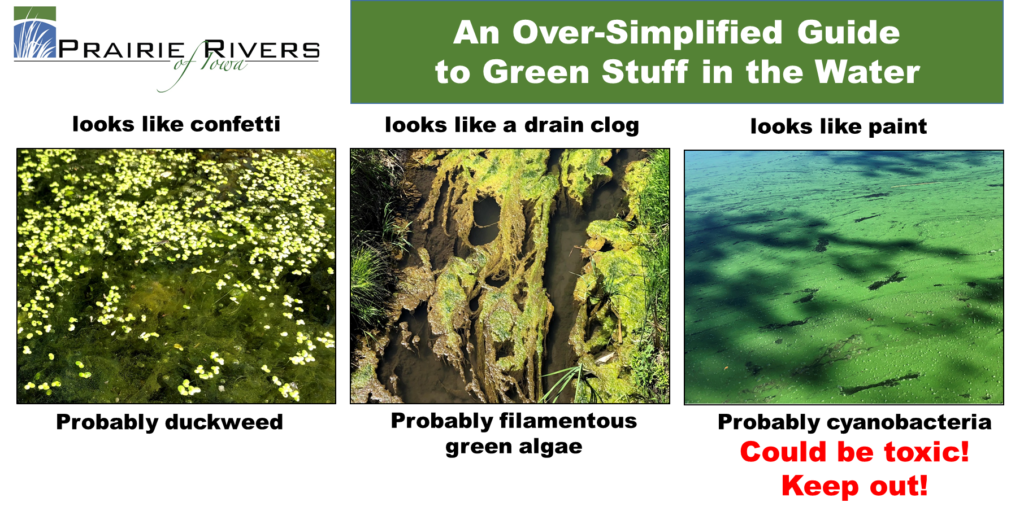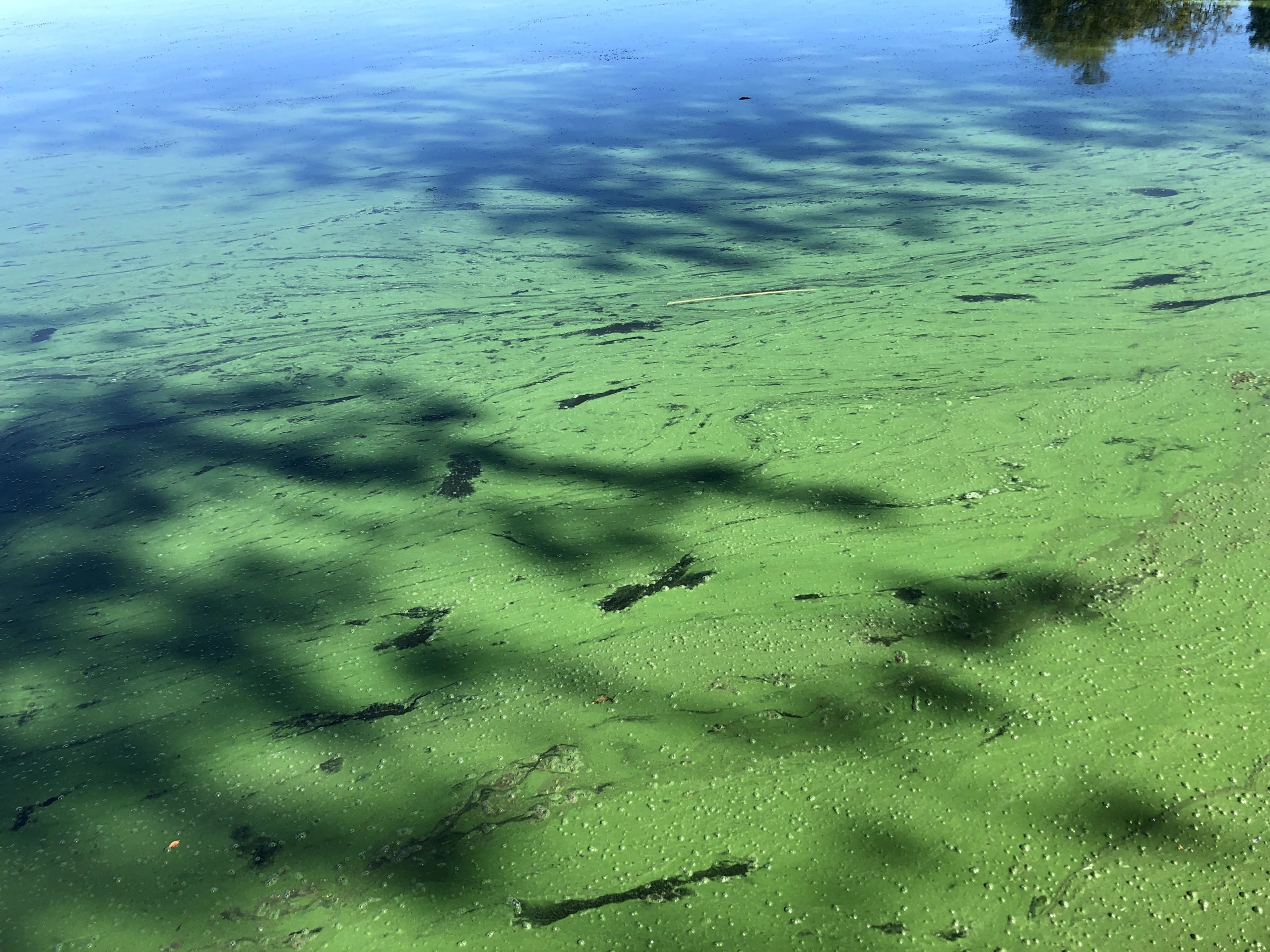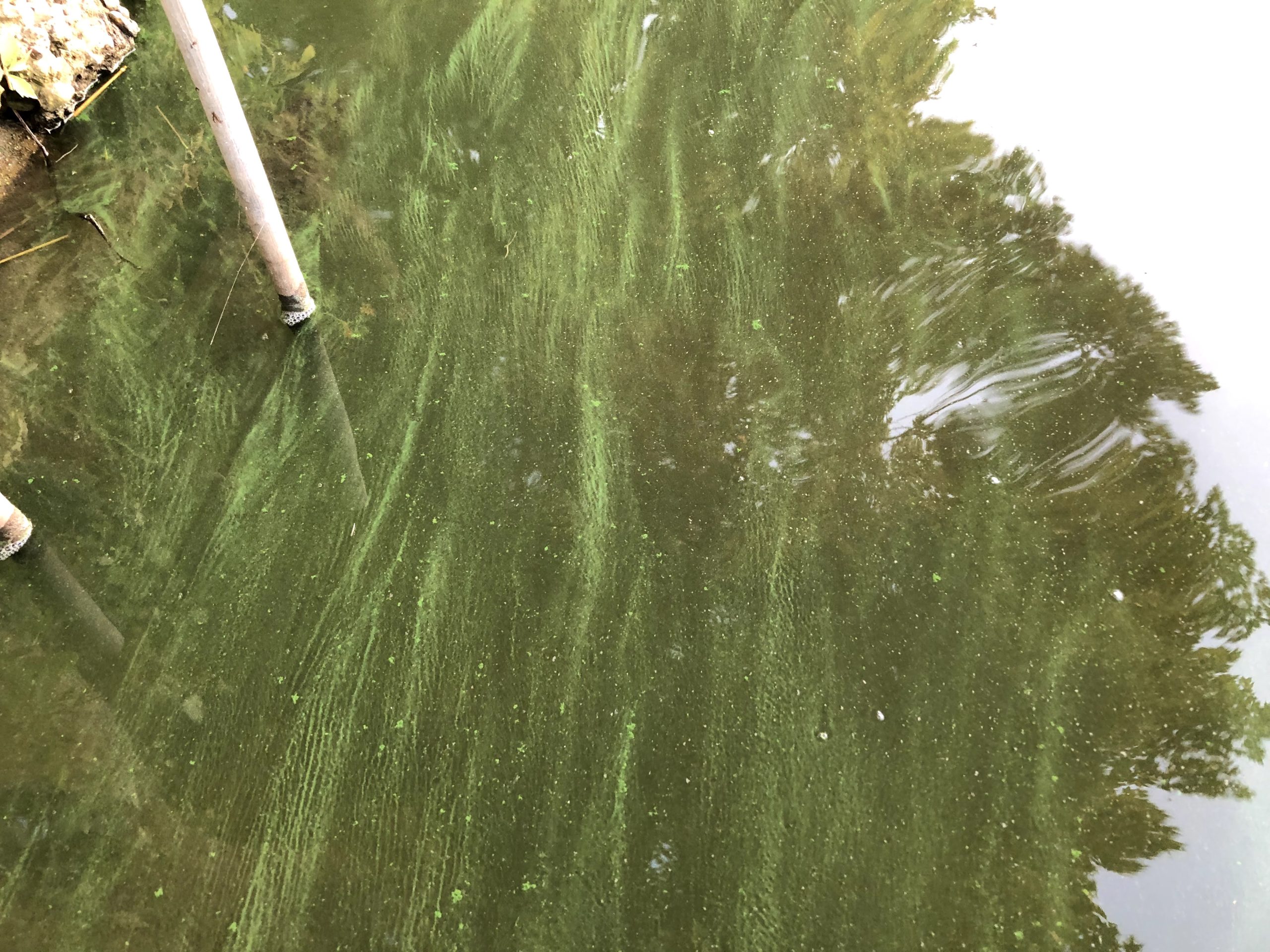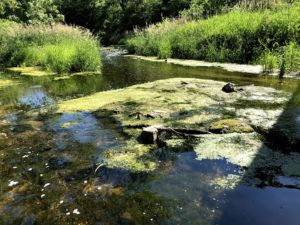I got a good look at a cyanobacteria “bloom” over Labor Day weekend, at a lake in Wisconsin. Cyanobacteria can produce toxins, and this proliferation of green gunk had done so earlier in the month, causing a large number of fish to go belly up. Cyanobacteria toxins can also be dangerous for people and dogs.
There were warning signs posted but they were wordy and left some doubt about whether it was okay to go in the water. Some kayakers were ignoring them. This has been an issue in Iowa as well. The Iowa Environmental Council is working with Iowa DNR to make the warning signs simpler and more visible. The Environmental Working Group recommends that midwestern states do more frequent testing for microcystins, the most worrisome class of cyanobacteria toxins. I support these steps, but I also think it’s important to let the public know what to look for, as its not always possible to run tests and post warnings in a timely manner. How about this rule of thumb, illustrated in the graphic above? If it looks like paint, stay out!
Not every cyanobacteria bloom can be so easily identified, and not all cyanobacteria produce toxins, but enough of the toxin-producing species do look like spilled paint or “pea soup,” that it seems like a good starting point.
When I first arrived at the lake, it was streaks of green and brown in the water, like the rinse station for a child’s art project. The next day, more had been blown to our side of the lake and it formed a thick surface scum with bubbles, like latex paint left out for too long, and had a nasty smell. The color was a bright green mixed with brown but cyanobacteria blooms can also be bluish green, blue, brown, or red.
Some of the harmless green things more commonly growing in lakes, streams, and ponds look completely different, as pictured above.
Duckweed looks like confetti scattered on the water surface. There’s a few different species ranging from dots (the 1 cm Spirodela) to specks (the 2 mm Wolffia). They are large enough you see the individual round leaves with the naked eye, and they sometimes have trailing roots. Surprisingly, it’s actually a flowering plant related to peace lillies, with tiny, wind-pollinated flowers. As the name implies, they are an important food source for waterfowl.
Green algae are a huge assortment of plant relatives, some single-celled and microscopic (until there are enough to turn the water green), some joining together into spheres, nets, or filaments. Filamentous green algae look like slimy hair when they grow on rocks, and like drain clogs when they are dislodged and float on the surface or wash up on beaches.
And then there’s a variety of aquatic plants (pondweeds, coontail, and others) that can be found rooted to the bottom. While dense “weeds” can be a nuisance for motor-boaters, a plant-dominated lake is better for fish than an algae-dominated lake, or one with nowhere to hide and nothing to eat.
If the lake looks like paint, stay out! Experts, can I say that? It’s an over-simplification, but not everyone has the patience to read a more complicated message, or the good sense to take it seriously.
For more on harmful algae blooms and how to keep yourself and and your dog safe, the Iowa Public Health Department has some good resources.




